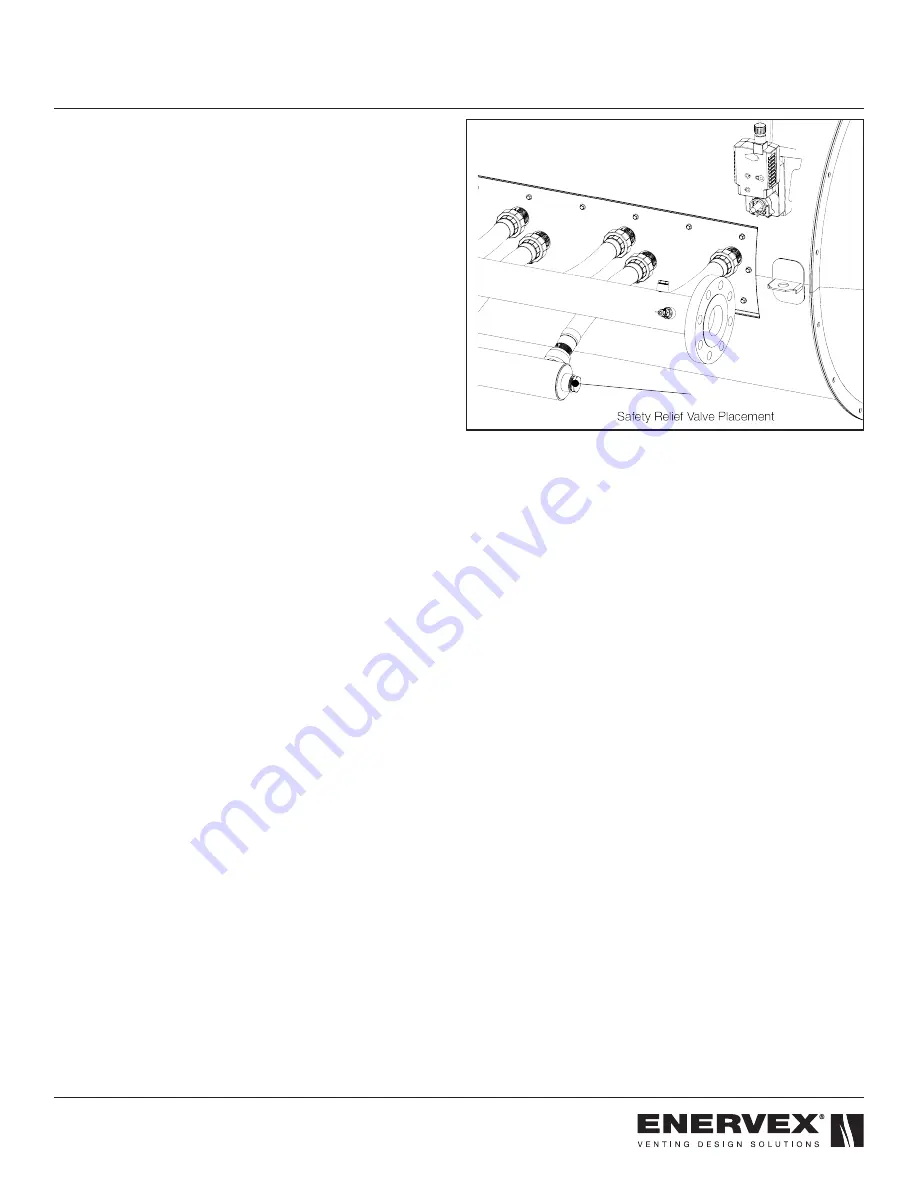
13
010.4150.0720 08.21
Freeze protection concerns: During a system shutdown
where combustion halts for an extended period of time
(other than normal cycling), cold air will travel back down the
stack and exhaust breechings, through the economizer and
into the combustion source. If the cold air is below freezing,
it could freeze the plates and cause a rupture, ultimately
destroying the economizer. For potential freezing applications
where the water flow might stop, a manual system shut
down routine should be incorporated. It is not recommended
to use solenoid type drain valves for auto draining in subzero
environments unless absolutely necessary.
Do not insulate the economizer where factory insulation has
already been applied or damage to the exchanger can occur.
Insulate piping and exhaust ducting as required.
Ensure that no liquid connections interfere with the opening
of recovery unit trays. Economizer relief valves shall not have
set pressure ratings higher than the rated pressure of the
heat modules. Liquid storage tank relief valves shall not have
discharge pressure ratings higher than the rated pressure of
the storage tank. To avoid safety valve leakage, ensure that
safety valve set pressure is sufficiently higher than dead head
pressure of the feed pump.
It is recommended that the pipe and circulating tank (if
included) be insulated to reduce heat loss.
If existing conditions may subject the heat modules to
internal scale build up, pressure gauges (furnished by others)
should be installed on the liquid inlet and outlet sides of
the economizer. This will enable monitoring of liquid flow
restriction. Capped tees, one on the liquid inlet side and
one on the liquid outlet side, incorporated into the piping
installation may allow a descaling solution to be used with
the economizer in place. Consult the factory for suitable
descaling solutions.
Fig 13










































